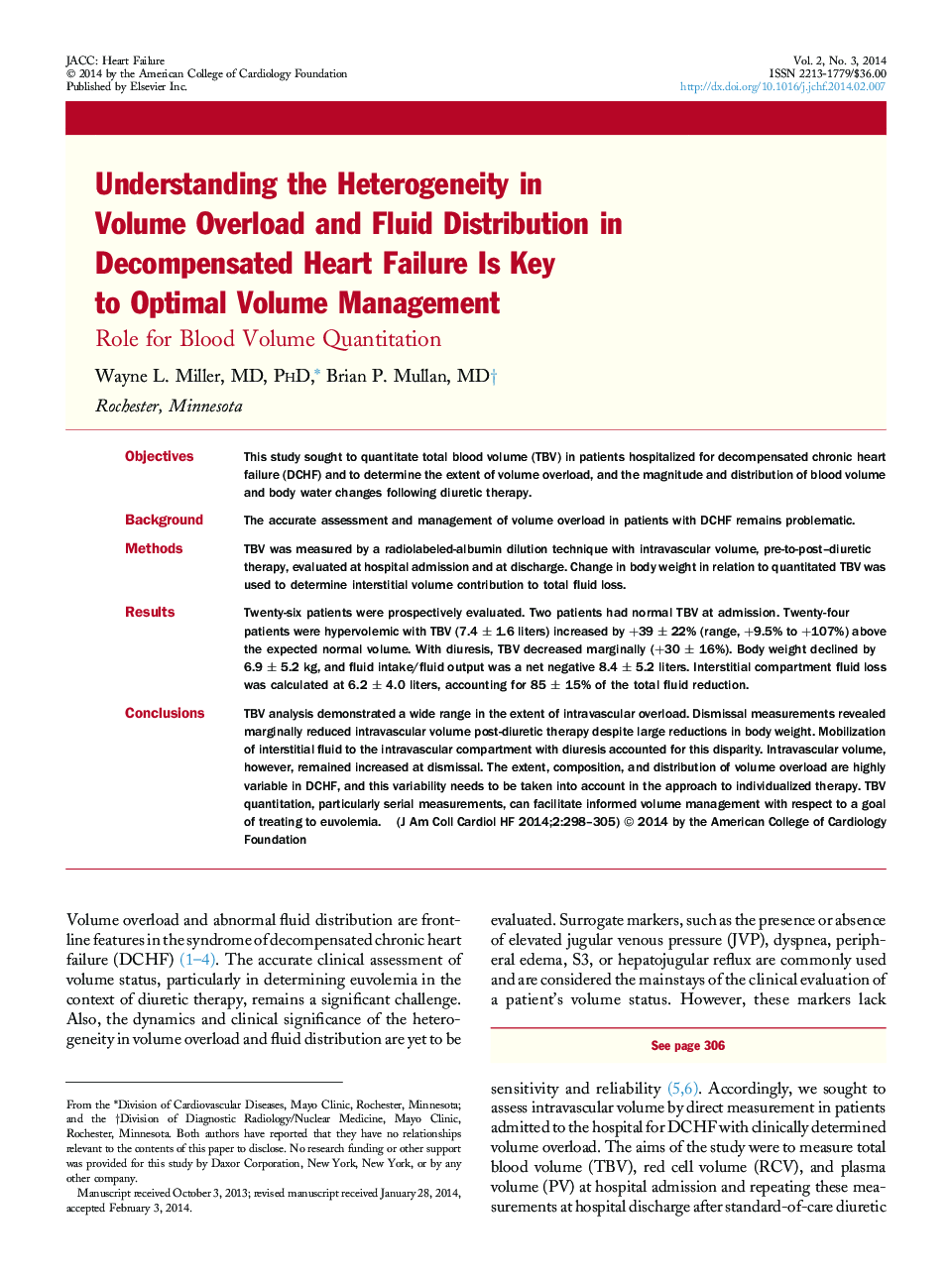| کد مقاله | کد نشریه | سال انتشار | مقاله انگلیسی | نسخه تمام متن |
|---|---|---|---|---|
| 2942511 | 1177129 | 2014 | 8 صفحه PDF | دانلود رایگان |
ObjectivesThis study sought to quantitate total blood volume (TBV) in patients hospitalized for decompensated chronic heart failure (DCHF) and to determine the extent of volume overload, and the magnitude and distribution of blood volume and body water changes following diuretic therapy.BackgroundThe accurate assessment and management of volume overload in patients with DCHF remains problematic.MethodsTBV was measured by a radiolabeled-albumin dilution technique with intravascular volume, pre-to-post–diuretic therapy, evaluated at hospital admission and at discharge. Change in body weight in relation to quantitated TBV was used to determine interstitial volume contribution to total fluid loss.ResultsTwenty-six patients were prospectively evaluated. Two patients had normal TBV at admission. Twenty-four patients were hypervolemic with TBV (7.4 ± 1.6 liters) increased by +39 ± 22% (range, +9.5% to +107%) above the expected normal volume. With diuresis, TBV decreased marginally (+30 ± 16%). Body weight declined by 6.9 ± 5.2 kg, and fluid intake/fluid output was a net negative 8.4 ± 5.2 liters. Interstitial compartment fluid loss was calculated at 6.2 ± 4.0 liters, accounting for 85 ± 15% of the total fluid reduction.ConclusionsTBV analysis demonstrated a wide range in the extent of intravascular overload. Dismissal measurements revealed marginally reduced intravascular volume post-diuretic therapy despite large reductions in body weight. Mobilization of interstitial fluid to the intravascular compartment with diuresis accounted for this disparity. Intravascular volume, however, remained increased at dismissal. The extent, composition, and distribution of volume overload are highly variable in DCHF, and this variability needs to be taken into account in the approach to individualized therapy. TBV quantitation, particularly serial measurements, can facilitate informed volume management with respect to a goal of treating to euvolemia.
Journal: JACC: Heart Failure - Volume 2, Issue 3, June 2014, Pages 298–305
